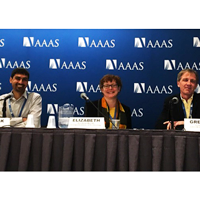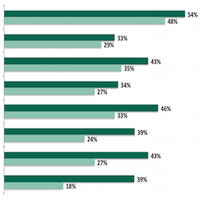Expanding the Pipeline: Interview with Sandhya Dwarkadas
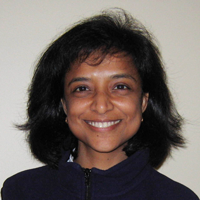 Sandhya Dwarkadas is the Albert Arendt Hopeman Professor of Engineering and Chair of the Computer Science Department at the University of Rochester, with a secondary appointment in Electrical and Computer Engineering. She received her Bachelor’s from the Indian Institute of Technology, Madras, India, and her M.S. and Ph.D. from Rice University. Her research lies at the interface of hardware and software with a particular focus on concurrency. She has authored more than 100 refereed papers that cross areas within systems. Dwarkadas has made contributions to hardware- and software-based shared memory implementations and system reconfigurability, and has 12 U.S. patents. She is a CRA-W board member, and is currently on the editorial board of CACM Research Highlights and IEEE Micro.
Sandhya Dwarkadas is the Albert Arendt Hopeman Professor of Engineering and Chair of the Computer Science Department at the University of Rochester, with a secondary appointment in Electrical and Computer Engineering. She received her Bachelor’s from the Indian Institute of Technology, Madras, India, and her M.S. and Ph.D. from Rice University. Her research lies at the interface of hardware and software with a particular focus on concurrency. She has authored more than 100 refereed papers that cross areas within systems. Dwarkadas has made contributions to hardware- and software-based shared memory implementations and system reconfigurability, and has 12 U.S. patents. She is a CRA-W board member, and is currently on the editorial board of CACM Research Highlights and IEEE Micro.
Q: When you started in your field, parallel processing was somewhat esoteric. Now there are many different approaches and parallel processing is widely used. How do you ride that wave of change? What are some key challenges now?
A: Working as I do at the boundary of hardware and software, the continuously changing landscape in terms of underlying technologies and their capabilities, and the demands of new and emerging application domains, provide a steady supply of challenging research questions. Properties such as time, energy, accuracy, reliability, and persistence require re-architecting to adapt to technology changes. In large part, my research focuses on coordination, communication, and sharing—from the design of scalable (in terms of data size and core count) coherence protocols at the architecture level, to the use of hardware performance counters for resource allocation at the operating system level, and the design of scalable runtime systems that allow parallel applications to scale to larger core counts and data sizes.
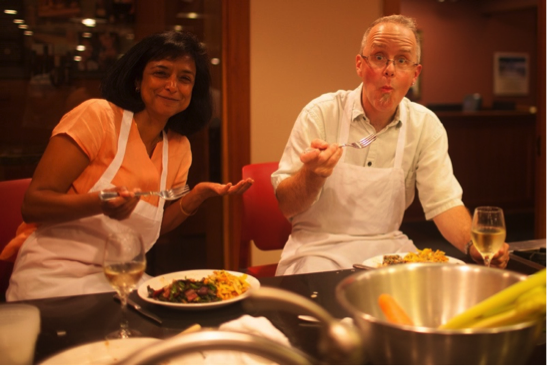
Dwarkadas bonding with a colleague during a culinary lesson at the 2016 CS department retreat.
There is a revival of parallel and distributed computing at an unprecedented scale. I believe many of the challenges will require an increasingly interdisciplinary approach—knowledge of both application domains and underlying technology. I strive to keep abreast of both via collaborations with users of parallel computing (e.g., biologists, physicists, biostatisticians, radiologists, and algorithmicists) and via collaborations with industry (DEC/ Compaq, IBM, Intel, Qualcomm, and Huawei).
Q: What appeals to you about a career in academia?
A: The multiple jobs involved (teaching, research, grant writing, and professional and university service) and the flexibility to work on research topics of my choice. Most importantly, the opportunity to work with talented graduate students, each of whom contributes unique strengths and enables me to explore new areas based on their specific interests.
Q: You recently became chair of the computer science department at Rochester. What are some of the most exciting opportunities you have in this new role? What are some of the challenges?
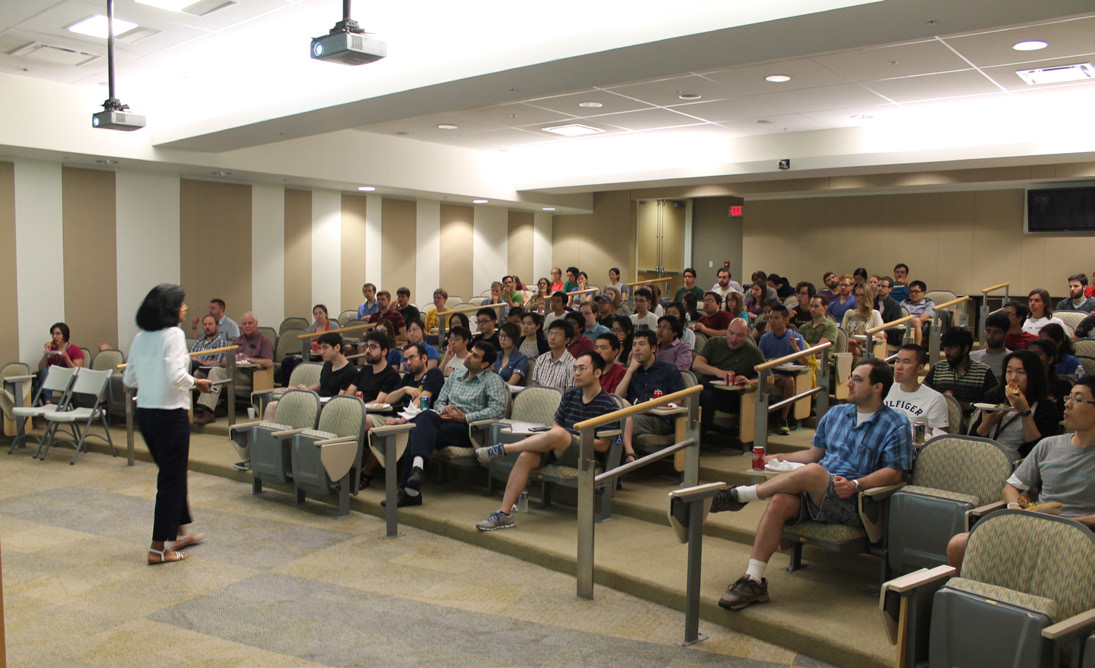
Dwarkadas engaging with graduate students on the topic of technical presentation skills.
A: I have been chair of the department for the last two years. This is a period of growth for us, and a great opportunity for me as chair to help shape that growth with the help of the rest of the faculty. I just recently held a department retreat where our brainstorming produced a long list of action items and much material for our strategic plan. Burgeoning enrollments have certainly been a challenge, and it sometimes seems like a game of catch-up. We have initiated new interdisciplinary majors, including computational linguistics and computational biology. The university’s data science initiative has provided the opportunity and impetus to further our reach. We have strong ties with the brain and cognitive science and the electrical and computer engineering departments, as well as the medical center. We will move into a new building, along with the Goergen Institute for Data Science, within the next year. All in all, it’s an exciting time to be chair.
Q: What advice do you have for Ph.D. students? For new faculty members?
A: To graduate students, my advice would be to seize the opportunity to learn as much as possible about areas outside of your core research in order to be ready to address challenges at the boundaries of your discipline. In other words, get a perspective on the forest rather than focusing only on a single tree (your research).
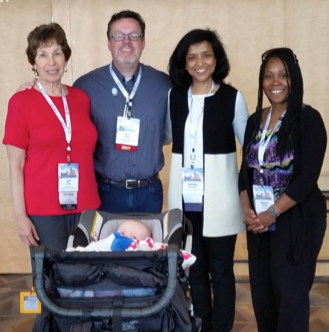
The 2016 CRA-W Grad Cohort Co-Chairs (Lori Clarke, Dwarkadas, Ayanna Howard) with CRA’s Erik Russell.
To new faculty members, I would recommend getting to know your environment, so you can draw from and complement its research strengths, if possible. This would be one excellent way to maximize the impact of your research.
Q: How have you been involved in CRA-W? What has this involvement meant to you?
A: I have always admired CRA-W’s efforts to support women in research. As a graduate student, I attended one of the first CRA academic career workshops organized for Ph.D. students. Subsequently, I’ve been a panelist or speaker at several CRA-W mentoring workshops. I have been on the CRA-W board since 2010. I am currently co-chair of the Grad Cohort Workshop and I also chair the BECA (Borg Early Career Award) committee.
Running the Grad Cohort Workshop has been particularly rewarding. While much of the advice dispensed is valuable to any graduate student, given the still small percentages of women in Ph.D. programs in computing, it is imperative to provide them with the support that might help retain them in the research pipeline. The Grad Cohort Workshop gives the women the ability not only to interact with senior female mentors, but also to form a peer network amongst themselves and share their experiences.
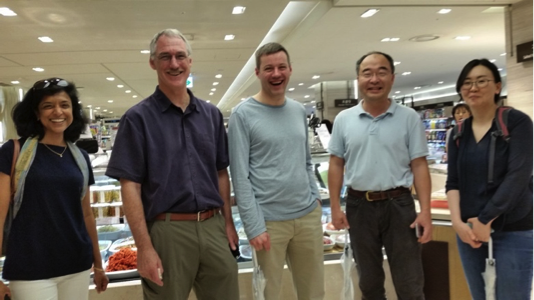
Dwarkadas and colleagues at ISCA 2016.
Q: What other activities have you been involved in that support women in computing?
A: Until very recently, the ratio of women to men in our undergraduate program was very small. As a new chair of the department, I decided to take action and responded to Maria Klawe’s call to action to increase diversity in the undergraduate population that she issued at the CRA Conference at Snowbird in 2014. The University of Rochester is one of 15 universities participating in the BRAID (Building Recruiting and Inclusion for Diversity) initiative, which is funded by Facebook, Google, Intel, and Microsoft, and administered by the Anita Borg Institute. Each of these 15 universities has committed to conscious efforts to broaden participation via curricular innovation, building community, outreach to schools, and interdisciplinary programs. Sharing experiences among the group has been very valuable, and at Rochester we have already seen significant outcomes through our efforts. From 2010 to 2016 the percentage of women in our undergraduate population has gone from 5% to 30%.
Q: What do you enjoy doing when you aren’t working?
A: I have a range of things I enjoy, from traveling to reading, watching movies, doing yoga, playing badminton, and partner dancing (salsa and rueda de casino in particular right now). I have even tried my hand at pottery. I garden, cook, try to fix things around the house, and fuss about interior decoration. Most of all, I enjoy spending time with family and friends. They keep me grounded and give me that sense of belonging to the circle of life.
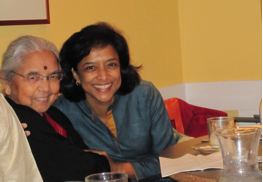
Dwarkadas with her mother during the latter’s 80th birthday celebration.
Q: Is there anyone, in particular, who has inspired you?
A: My mother, who was a big part of my life until very recently (she passed away last February). She was a teacher in her younger days. In her later years, she was severely physically debilitated by arthritis, which slowly ate away at her independence. I salute her indomitable courage in the face of all odds and her energy and will to participate and contribute to life where others might have given up a long time ago.
These are attributes I aspire to.








